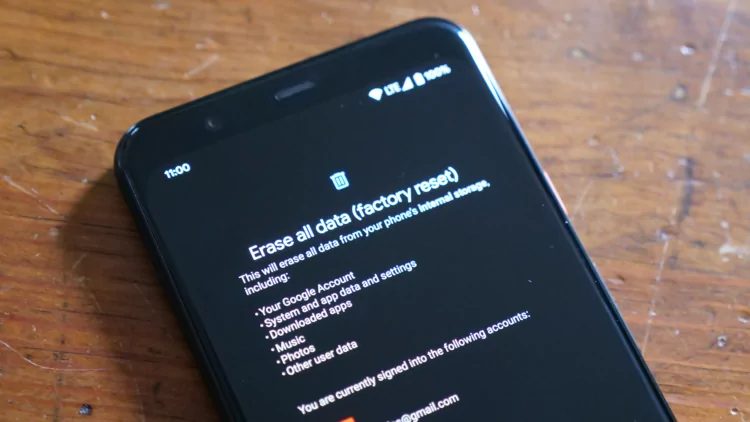Wondering can I delete XML files on my Android device? Curious what they do and how they impact your smartphone’s performance? You’re not alone. XML files are a crucial yet often misunderstood component of Android systems.
In this comprehensive guide, we’ll demystify XML files, diving deep into their functionality, importance, and how they interact with various apps on your Android device.
From understanding the general concept of Extensible Markup Language (XML) to exploring specific XML files like Alvin2.xml and Contextdata.xml, we’ve got you covered. Read on to become an XML pro and take control of your Android experience.
Alvin2.xml and ContextData.xml are files that help apps target you with ads.
It is safe to remove these specific XML files, but other XML files might hold critical data and should not be deleted unless vetted for safety.
Additionally, Alvin2.xml and ContextData.xml will return unless you delete their associated apps.
So if you want to learn all about the safety of deleting Android XML files, then you’re in the right place.
Let’s jump right into it!
What Are XML Files?

In order to really understand how to manage XML files on an Android, we need to go through some background information.
The best place to start is to discuss XML files in general.
The first thing to know is that XML files are not unique to Android systems.
This file type can be found on a lot of different computerized systems.
In fact, XML actually stands for Extensible Markup Language.
XML itself is a markup language and file format.
What does that mean?
It means that computers use XML as a language and format for storing, transmitting, and structuring (or reconstructing) data.
In other words, an XML file can be used to easily share data from one computer system to another.
And, because it is a markup language, it is also easy for computers to rebuild data from an XML file.
This matters because, in digital communication, small pieces of data are frequently lost or corrupted when being shared.
The short version is that building something like the internet is very complicated, and there’s room for random errors along the way.
But, the way XML is designed, computers can rebuild lost data without any extra communication.
So, if you send an XML file from one device to another, and a little bit of data is lost along the way, you don’t have to resend the whole file.
The computer can use the very structure of XML to figure out what’s missing, and this process is very accurate.
As a result, XML data is shared very quickly, and XML files are easy to archive and back up.
It’s all very reliable.
The last thing to know about XML is that it is a human-readable language.
Everything in an XML file is written in ways that make sense to human users.
What Do XML Files Do on an Android?
That’s a great overview of XML, but it’s not entirely specific.
Sure, XML files on an Android are easy to share and reconstruct, but what does that specifically mean for an Android, and what are all of those different XML files that you find?
Ultimately, XML is functioning the same way on an Android device as any other, but there’s a bit of an ecosystem to understand.
A lot of Android apps are built on XML (or at least partially built on XML).
Because of this, Android devices are likely to have large numbers of XML files.
Those files are still just storing information efficiently and making it easy to upload or download information from app servers (or to share with other people).
The thing to understand is that XML is very common on Android systems.
Also: Android Factory Reset: Removes Android Updates?
You might see a lot less XML on an Apple system or a Windows system (although you’ll still see it in both cases).
That’s because when it comes to storing and sharing data, XML’s design works really well with Android.
Some of this will make even more sense as we explore a couple of specific examples.
What Is Alvin2.xml?
You might be here because you saw Alvin2.xml on your phone, and you’re wondering what it is.
In that case, allow me to explain.
First, we can glean some information from the name of the file.
It ends in “.xml” which tells us that it is in fact an XML file.
The other key context clue is in the beginning, “Alvin2.”
You may have never heard of this before, but Alvin2 is related to an ad-generating tool known as TaoBao.
This is a Chinese online shopping platform.
So, how did that get on your phone?
Most likely, you installed software that allows for advertising, and TaoBao paid that software developer to include Alvin2 in the data somewhere.
In this specific scenario, Alvin2.xml is there to help an app on your phone identify the correct ads to send to you: TaoBao-sponsored ads.
The truth is that XML files can carry out a lot of different functions, all tying back to the idea of managing data.
In a broader context, if you have a free app on your phone that shows you ads, it probably installed an XML file on your phone that helps direct those ads.
The XML file holds key data that the app uses to pick and direct the right ads for your experience.
If any of this bothers you, I’ll discuss the removal of this and similar XML files in a bit.
What Is Contextdata.xml?
Another example we can use is Contextdata.xml.
Once again, the suffix is telling us that this is an XML file, so the purpose of this thing is to manage data.
This file is actually related to Alvin2.xml.
The two work in content with the ad experience I discussed above.
While Alvin2 is communicating with cloud servers to figure out which ads to send to you, Contextdata.xml is working to store information on your device.
Essentially, this file can save information related to ads to help them load more easily in the future.
Is It Safe to Remove XML Files?

If we’re talking about all XML files, it’s not always safe to remove them.
If the file holds information that you value, then you don’t want to delete it unless that information is backed up somewhere else.
When it comes to the two specific examples in this article, then yes.
It’s perfectly safe to remove them.
Doing so will effectively reset your ad experience with whichever apps are using them.
There is one thing to note, though.
If you remove the XML files but not the apps that use them, then the apps will most likely remake the XML files as needed.
Let’s say you install a free game on your phone.
You don’t have to pay to use it, but every once in a while, it runs an ad in the game.
If this game uses Alvin2.xml and Contextdata.xml, then you can delete both files.
But, the next time you play the game and it runs an ad, it will remake each file so that it can continue to try to control the ad experience.
Deleting these XML files alone won’t really change much.
What About Other XML Files?
Outside of these specific examples, as I’ve already mentioned, your experience will vary.
Typically, removing XML files won’t brick your phone, but they can eliminate important data.
Removing critical XML files can also paralyze apps that depend on them for specific bits of data.
I know that’s vague, but there’s just a huge range of possible answers here.
If you’re looking for a rule of thumb, don’t delete things from your phone unless you know what they are.
If you comb through every file on the phone, you’ll find plenty of XML files that you don’t recognize.
Android is a big system, and most people run a lot of apps.
Every single app is capable of creating multiple XML files in order to manage data and run smoothly.
If you delete things without knowing what they are, you can impact that performance rather dramatically.
More to the point, deleting XML files can definitely get rid of data, but it usually doesn’t eliminate the source of the XML file.
As with the two examples above, many apps make their own XML files for data management.
If you delete such a file, then the app will just remake it from scratch.
Do you remember when I said earlier that the structure of XML makes it easy for computers to reconstruct missing data?
That’s exactly why apps use XML files.
Even if you delete the file, the app can reconstruct some or all of what was lost.
The real way to get rid of an XML file that you don’t like is to eliminate the software that created it.
How Do You Remove XML Files? (3 Steps)
Ok. I’m going to walk you through how to delete Alvin2.xml, ContextData.xml and other XML files.
If you’re targeting a different app, the concept will be the same.
You’ll simply need to make adjustments to the search and which names you target.
That’s really it.
To remove these files, we’re really after the apps that use them, so I’m going to show you how to figure out which apps those are and go from there.
#1 Backup Your Phone
The easiest way to go through this process is to completely erase your phone and start from scratch.
Obviously, you don’t want to do that without a proper backup.
There are a few ways to go about that.
To save a little time and space here, I’m going to leave you with this link.
It can walk you through creating a reliable backup.
So, no matter what happens in the following steps, you can always get back to where you started.
#2 Erase Your Phone

You backed everything up, right?
This is really the last chance to do that.
The next step is to completely erase the phone and install a fresh build of Android.
Again, I’ll leave the linked instructions to keep things a little cleaner here.
When you completely erase and delete everything, you effectively get rid of all of the XML files and the apps that make them.
You could stop here if you wanted to.
But, resetting your phone isn’t the most satisfying solution, so there is another step, and it can be a little painstaking.
#3 Install Apps One at a Time
Alright. The last thing you want to do is figure out which app you had on the phone before that was creating these XML files.
So, you’re going to download them one at a time.
After each download, launch and use the app.
Then, check your XML files to see if the culprits are back.
Eventually, you’ll figure out which app is responsible.
Then, you can delete that app and the XML files.
They shouldn’t return.
If you want to be thorough, you can keep going through your list of apps to see if any others are using the same ad-based XML files.
That’s always a possibility.
When you’re satisfied, you can restore your phone from the backup.
After that, you simply need to delete the problematic apps.
You don’t even need to delete the XML files after that.
They’ll be inert.
But, if you have a vendetta, you can delete them manually at this point, and they shouldn’t come back.
- Will Alarms Go Off On Facetime or During a Phone Call?
- com.android.certinstaller on Android: Meaning?
- Normal Temperature of Android Phones and How to Check It?
- Telegram Files: Saved Where on Android?
- Mock Location on Android: How To Fix
- Port Forwarding Android Hotspot: How To?
- Android Phone Pausing Music & Video: How to Fix?


